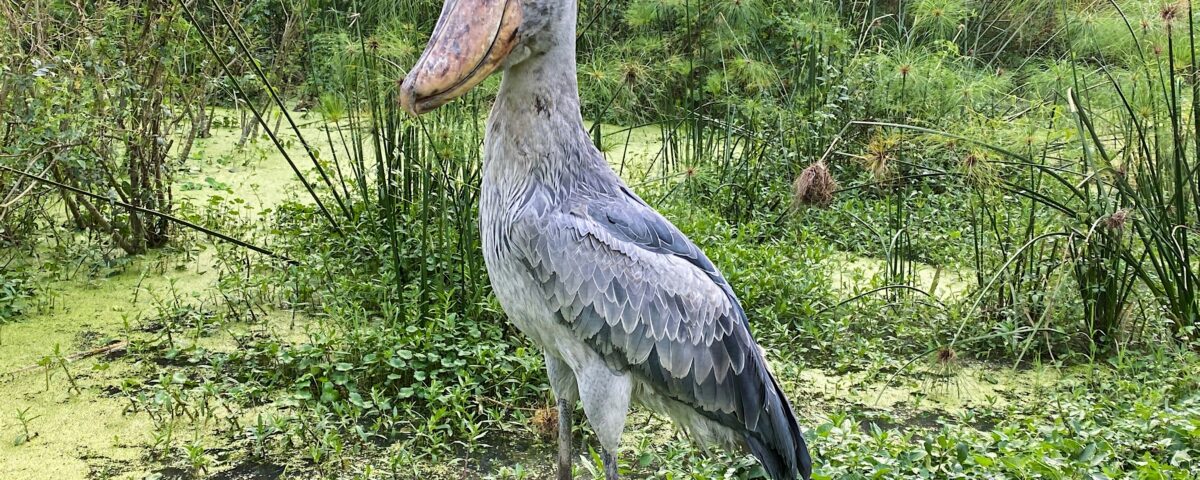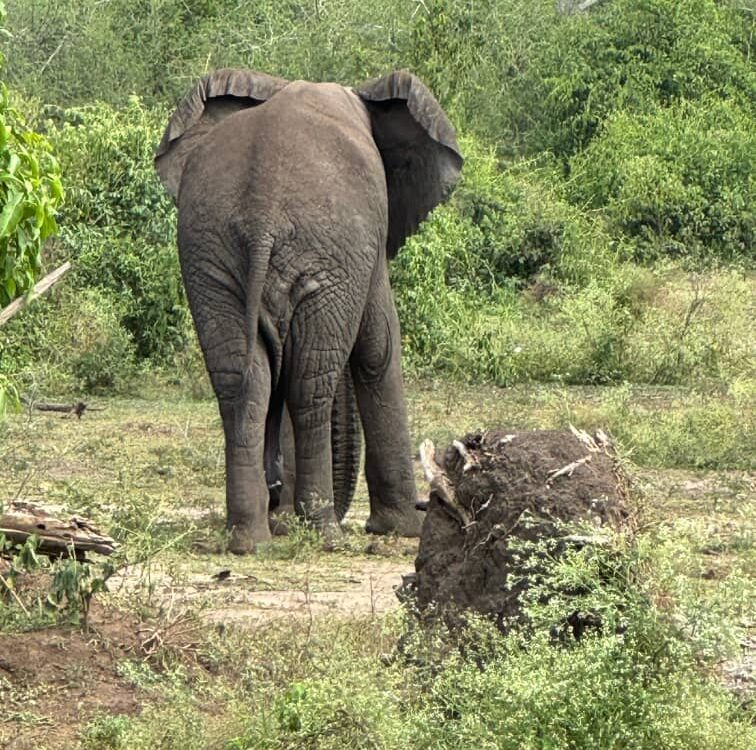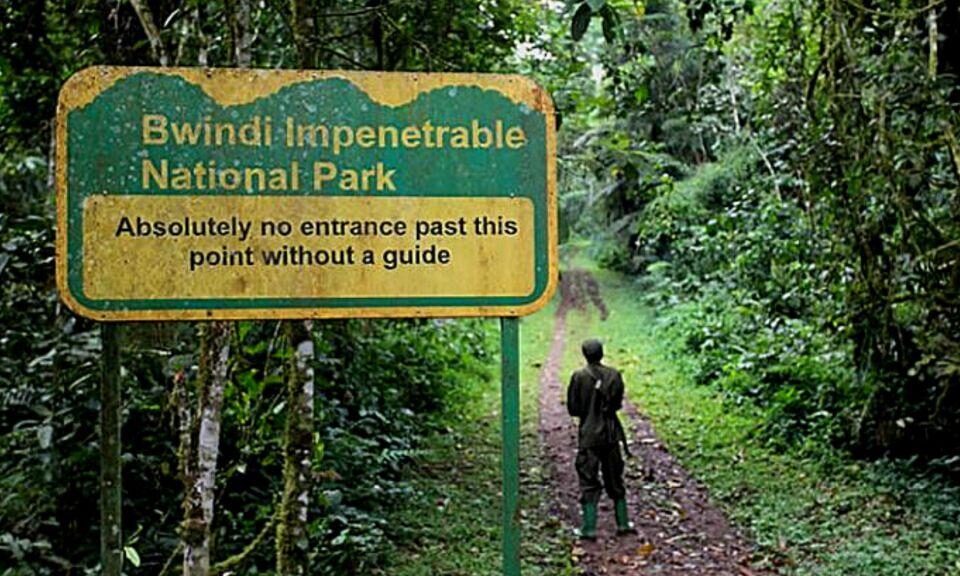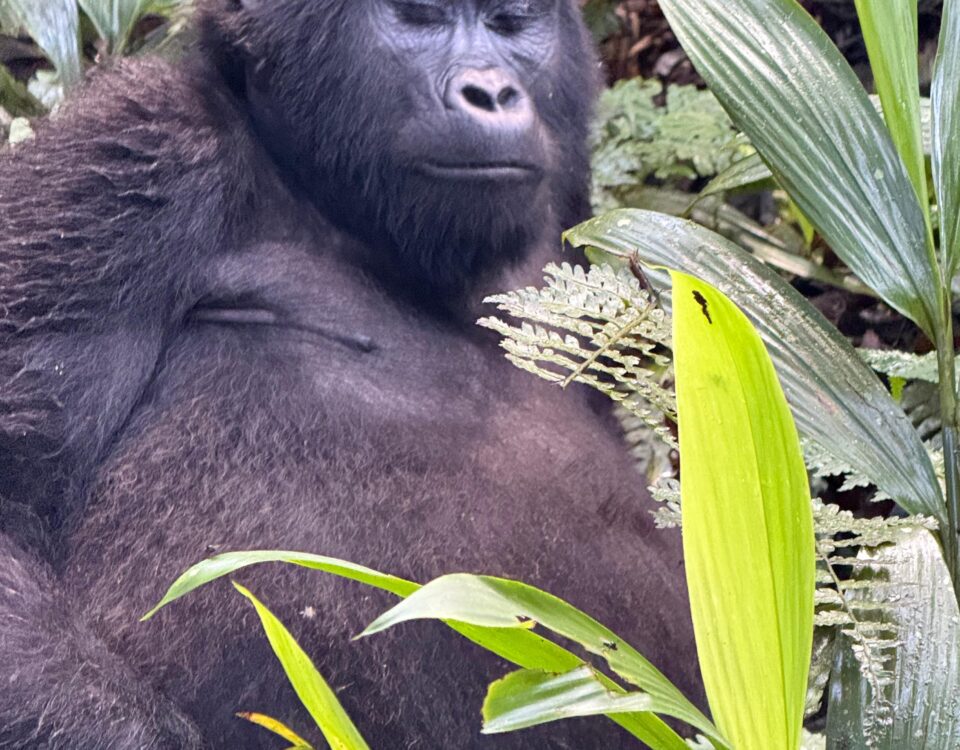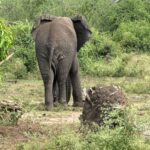
Best Places to See Elephants in Uganda
October 17, 2025Mabamba Shoebill Tour
Are you planning a shoebill tour in Mabamba? Uganda, known as the “Pearl of Africa,” is a haven for wildlife enthusiasts and birdwatchers alike. Among its myriad attractions, the Mabamba Wetlands stand out as one of the best places to observe the elusive and fascinating shoebill stork. This iconic bird, with its distinct shoe-shaped bill and prehistoric appearance, draws birdwatchers from around the globe. This article delves into the Mabamba Shoebill Tour, detailing the experience, what to expect, and tips for maximizing your visit.
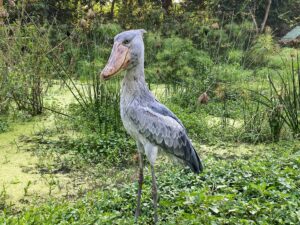
Where is Mabamba Swamp located?
Mabamba Wetlands is located on the northern shores of Lake Victoria, approximately 50 kilometers (about 31 miles) southwest of Kampala, Uganda’s capital. The wetlands cover an area of about 242 square kilometers (approximately 93 square miles) and are a crucial habitat for a variety of bird species, including the shoebill stork. The region is easily accessible by road, with several tour operators offering half-day or full-day trips from Kampala.
The Mabamba Wetlands are part of a larger ecosystem that includes marshes, papyrus swamps, and open water. This diverse environment supports an array of wildlife, making it a vital area for conservation. In addition to shoebills, the wetlands are home to over 300 bird species, as well as various mammals, reptiles, and amphibians.
The Shoebill Stork – A Unique Bird
The shoebill (Balaeniceps rex) is easily recognizable due to its large, shoe-shaped bill, which can measure up to 24 centimeters (about 9.4 inches) in length. Adult shoebills are typically grayish-blue in color and can stand up to 1.5 meters (approximately 5 feet) tall. Their striking appearance and large size give them an almost prehistoric look, making them a sought-after sight for birdwatchers.
Shoebills are known for their solitary and elusive nature, often preferring to remain hidden among the reeds and papyrus of their wetland habitats. They primarily feed on fish, particularly lungfish, but will also consume small reptiles and amphibians. Their hunting technique involves a patient and stealthy approach, where they wait motionless before striking with remarkable speed.
What to Expect on the Mabamba Shoebill Tour
The Tour Experience
The Mabamba Shoebill Tour typically begins in the early morning, when the birds are most active. Visitors are picked up from their accommodation in Kampala and transported to the wetlands. Upon arrival, a local guide who is knowledgeable about the area and its wildlife will accompany you on the tour.
Boat Ride
The highlight of the tour is the boat ride through the wetlands. Visitors are taken on a canoe or motorized boat, navigating through the narrow channels surrounded by lush vegetation. The serene atmosphere, paired with the sounds of nature, creates an enchanting experience as you search for the shoebill and other bird species.
Birdwatching Opportunities
During the tour, you can expect to see various bird species, including:
African Jacana: Known for their long toes and legs, these birds are often seen walking on lily pads.
Malachite Kingfisher: A small, vibrant bird with stunning blue and orange plumage.
Papyrus Gonolek: A striking bird found in papyrus swamps, recognizable by its red and yellow colors.
The experienced guide will help spot these birds and provide insights into their behaviors and habitats.
Photography and Observation Tips
The early morning light is ideal for photography, providing soft, diffused light that enhances the beauty of the wetlands and its inhabitants. Additionally, during the morning hours, the shoebill is more likely to be active and visible, offering excellent photo opportunities.
Equipment Recommendations
For the best photography experience, consider bringing:
Camera with a Zoom Lens: A lens with a focal length of at least 200mm is recommended to capture the shoebill from a distance without disturbing it.
Binoculars: Binoculars can enhance your birdwatching experience, allowing you to observe details that might not be visible to the naked eye.
Waterproof Gear: Given the wetland environment, waterproof bags and covers for your equipment can be beneficial.
Be Patient and Respectful
Shoebills are elusive, so patience is key. Remain quiet and still to avoid startling the birds. Respect the natural environment and follow the guidelines provided by your guide to ensure a sustainable experience.
Conservation Efforts in Mabamba Wetlands
The Mabamba Wetlands are not only important for birdwatching but also play a critical role in the local ecosystem. They help regulate water levels, provide habitat for wildlife, and support local communities through eco-tourism.
Local organizations and conservation groups are working to protect the wetlands and raise awareness about the importance of preserving this unique habitat. Efforts include community education programs, sustainable tourism initiatives, and habitat restoration projects. By participating in the Mabamba Shoebill Tour, visitors contribute to the conservation efforts in the area. Tour fees often go toward protecting the wetlands and supporting local communities, making your visit beneficial beyond just the experience.
Planning Your Visit to Mabamba Wetlands
The best time to visit Mabamba Wetlands is during the dry season, which typically runs from December to February and June to August. During this time, the water levels are lower, making it easier to navigate the wetlands and increasing the likelihood of spotting shoebills and other wildlife.
What to Bring for a shoebill tour in Mabamba Swamp?
When planning your visit, consider packing the following essentials:
Sunscreen and Hat: The sun can be intense, so protection is important.
Insect Repellent: Mosquitoes and other insects can be prevalent in wetland areas.
Comfortable Clothing: Lightweight, breathable clothing will keep you comfortable during the tour.
Book through a reputable tour operator
Several reputable tour operators offer Mabamba Shoebill Tours, often including transportation, guides, and boat rentals. Research and choose an operator with good reviews to ensure a quality experience.
The Mabamba Shoebill Tour offers a unique opportunity to observe one of the world’s most fascinating birds in its natural habitat. With stunning landscapes, diverse wildlife, and a commitment to conservation, the wetlands provide an unforgettable experience for birdwatchers and nature lovers alike. By exploring Mabamba, you not only enhance your understanding of Uganda’s rich biodiversity but also contribute to the ongoing efforts to protect this vital ecosystem. Whether you’re an avid birdwatcher or a casual nature enthusiast, a visit to Mabamba Wetlands is sure to be a highlight of your Ugandan adventure.

